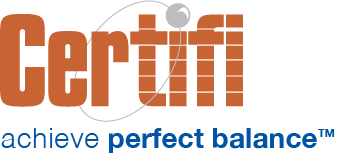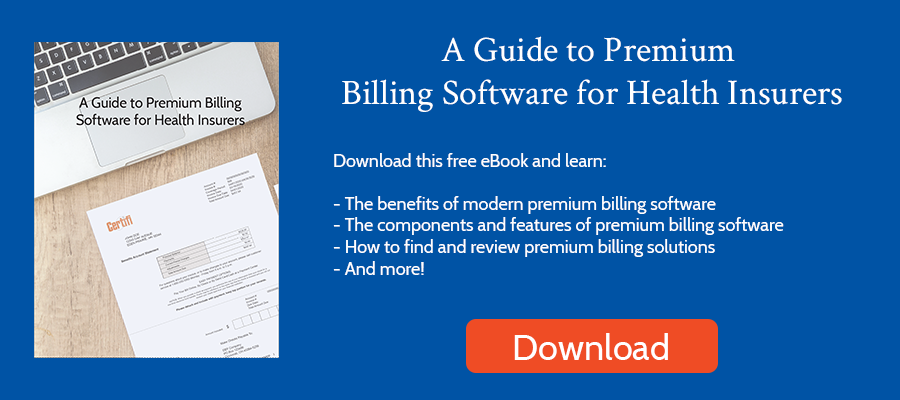According to a recent Gartner survey of healthcare payer CIOs and technology executives, member experience and cost optimization are the top enterprise priorities for payers. Their premium billing processes sit at the intersection of these two priorities. Poor billing software and processes increase errors, leading to member dissatisfaction. It also results in wasted time and more cost.
With that in mind, here are seven ways modern premium billing software reduces costs and improves efficiencies for health insurers:
7 Ways Modern Premium Billing Software Reduces Costs and Improves Efficiencies
-
- Automation
- Integration
- Reporting
- Configuration
- Real-Time Data Access
- Electronic Communication
- Configurable Communication
Automation
Premium billing software can significantly reduce costs and improve efficiency by eliminating manual processes. At Certifi, automation starts with software design. Our unique Perfect Balance design couples debits and credits to improve billing accuracy and virtually eliminate manual reconciliation.
But premium billing software can also automate other mundane tasks. For example, many members send checks without a payment stub. Sometimes those checks can be difficult to match to a member. Our solution leverages machine learning and artificial intelligence to read the check payment and recommend which member sent it. Our studies show that increased productivity by 4X.
Integration
Many legacy billing solutions have limited integration capabilities. That’s not true for modern modular, commercial off-the-shelf (COTS) solutions. Vendors designed modular premium billing COTS solutions to integrate with upstream enrollment platforms or downstream general ledger solutions. Typical integration methods include APIs, automated file exchange, and single sign-on (SSO) for member and health plan access.
Vendors design modular billing software to integrate with disparate systems. As a result, it’s easier to connect to analytics tools and other data consolidation platforms than all-in-one platforms. The result is better day-to-day billing performance and enhanced insight into billing data.
Reporting
Modern modular billing software ships with out-of-the-box standard reporting that helps manage day-to-day billing tasks. Those reports include:
- Aging reports
- Invoice and payment detail reports
- Delinquency reports
- Remittance reports
- Suspense reports
These reports simplify billing administration.
Premium billing software also can help segment reporting by business units. Assume you want reports for Medicare Advantage populations and your commercial customers. You can configure billing software to enable reporting by property line to get more granular detail.
Configuration
Updating rules in legacy premium billing systems often requires a developer to dig deep into the code. That rule configuration takes time and has an opportunity cost.
Modern premium billing solutions move those billing options into a configuration layer. Instead of requiring a developer, users make changes through a user interface. That process makes it easier to make product changes that impact billing.
Examples may include delinquency management parameters like when to send letters, when customers incur late fees, the delinquency threshold, and the refund process. Or it may be payment application rules that determine in what order partial payments should be applied. It might be commission rules. Or it may be simple billing rules like how frequently you invoice and on what day you initiate automatic payments.
Real-time Data Access
An award-winning member experience begins with access to plan information. That usually includes plan and provider information as well as billing data. Health plans commonly deliver billing information – like the last payment, the amount due, and an invoice history – in their member portal.
Accessing that data with modern premium billing software is easy. For example, our solution leverages an API to share common billing data with external applications. That real-time data exchange ensures the accuracy of billing data and is relatively simple to set up and maintain.
But it’s not just members that have access to real-time billing data. Member service teams also can access billing information and perform billing tasks like issuing refunds and researching payment status. Health plans configure an SSO integration to inherit existing permissions.
Electronic Communication
Better, more timely billing communication leads to an increase in on-time payment rates. Modern premium billing software reduces costs by offering electronic communication – like email – that delivers an immediate billing touchpoint. Plus, premium billing software can automate that communication each billing cycle, so you first set up the cyclical billing email and then manage exceptions.
Modern premium billing software enables automated electronic communications and also delivers automated print communication. Health plans can automate delinquency messages based on rules set up in the system. As a result, you can automate the creation of delinquency notifications and send them to your fulfillment center for distribution.
Configurable Communication
In addition to quickly configuring billing rules to align with new or modified products, premium billing software simplifies the creation of member communications, like invoices and delinquency notices. You can modify the message, insert different brand elements and even deliver unique invoice formats based on the product. Tailoring communications to members can improve on-time payment rates.
Configuring invoice designs can be difficult, which is why there’s limited variance among most invoices. But modern premium billing software like Certifi simplifies invoice design with grids and pages. Health insurers can mix and match those grids and pages to create unique invoices.
Certifi’s health insurance premium billing and payment solutions help healthcare payers improve member satisfaction while reducing administrative costs.



